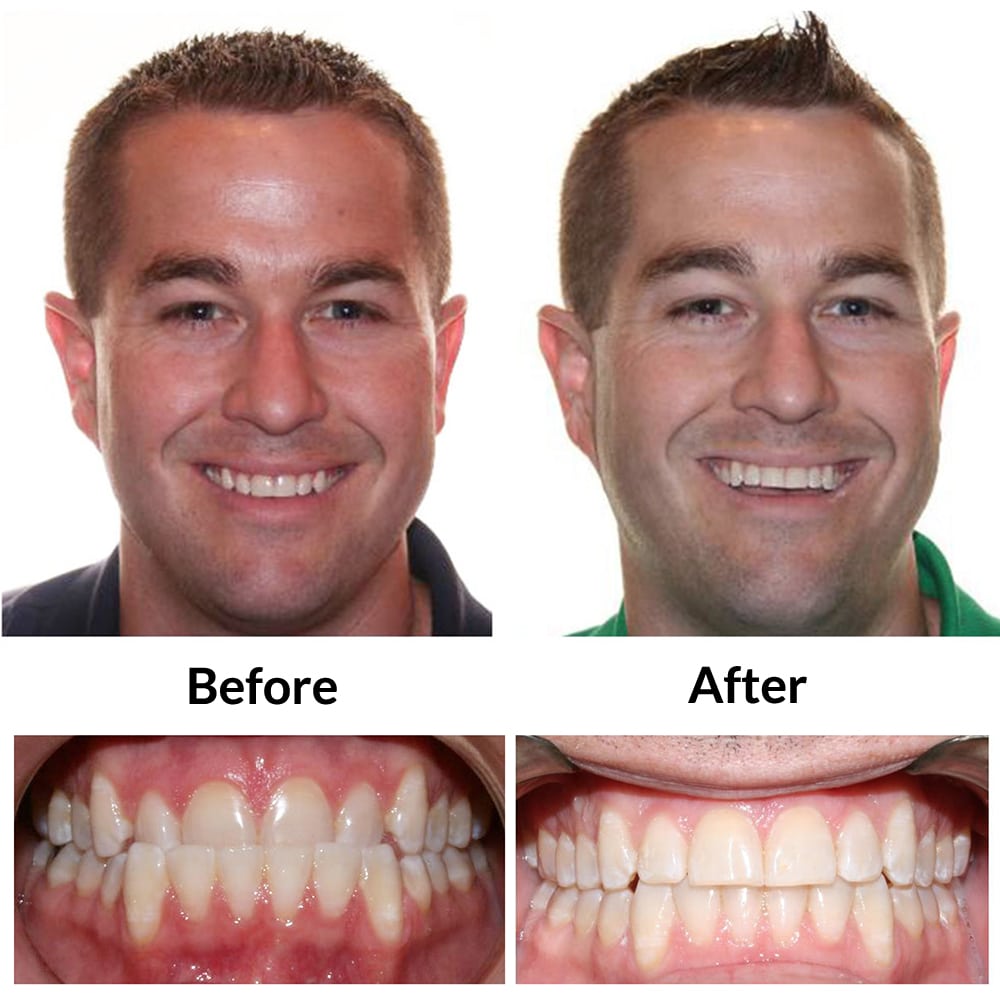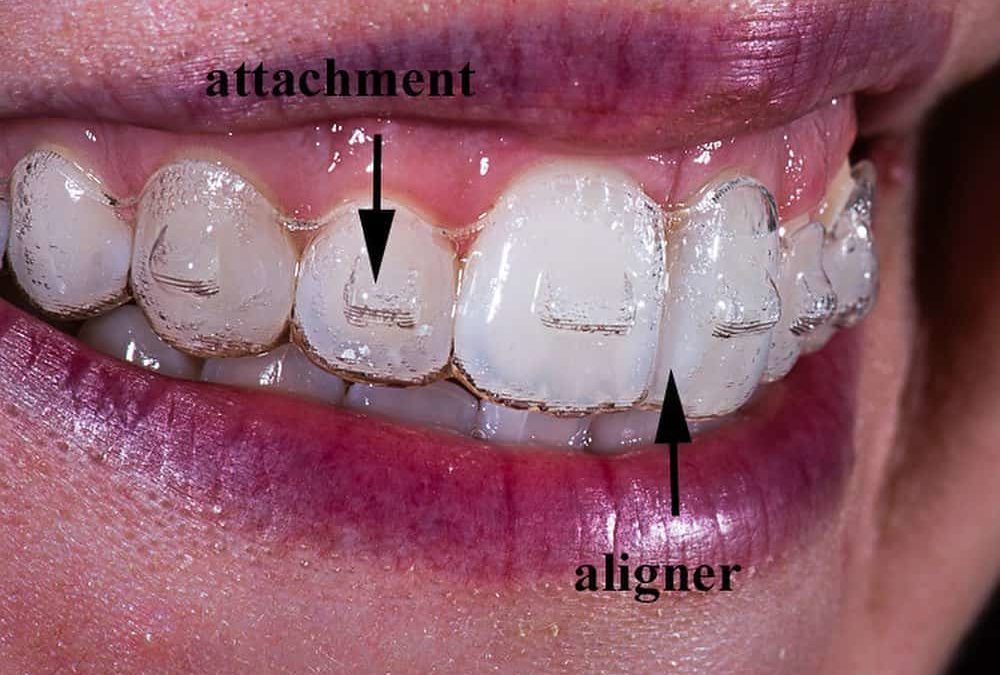Invisalign vs. Typical Dental braces: Which Alternative Is Right for You?
When thinking about orthodontic therapy, the choice in between Invisalign and conventional dental braces provides several vital variables that warrant mindful examination. Invisalign supplies a very discreet option with removable aligners, while typical dental braces provide an extra noticeable yet effective service for extreme misalignment. Each alternative encompasses distinctive benefits and disadvantages associated to aesthetics, comfort, treatment duration, and expense. Recognizing these nuances is essential for making an informed choice that lines up with your individual preferences and way of living. The question stays: which alternative will finest meet your orthodontic needs and expectations?
Review of Therapy Alternatives

In contrast, standard braces include metal braces and cords that are bonded to the teeth. This technique applies continual pressure in time to accomplish positioning. While reliable for intricate orthodontic issues, standard braces call for normal sees for changes and can present challenges in keeping oral health as a result of the problem of cleansing about braces and wires.
Both choices have their values, and the option typically hinges on details dental problems, lifestyle preferences, and individual compliance. Ultimately, speaking with an orthodontic professional is essential for establishing one of the most appropriate treatment strategy customized to specific needs. Recognizing the subtleties of each alternative can substantially influence the overall success of orthodontic treatment.
Aesthetic Considerations
A substantial aspect affecting the selection in between Invisalign and standard braces is the visual charm each therapy offers. Invisalign aligners are crafted from clear plastic, making them virtually undetectable when worn. This very discreet appearance is particularly interesting teens and adults that may really feel awkward about their orthodontic therapy. The ability to preserve an all-natural smile throughout the placement procedure can considerably boost the individual's self-confidence in social and professional settings.
On the other hand, typical dental braces include metal braces and cords, which can be much more visible. While improvements in orthodontic innovation have brought about the growth of smaller brackets and tinted elastics, traditional braces still maintain a more noticeable profile. For some individuals, the visibility of braces might discourage them from looking for necessary therapy.
Eventually, the option in between Invisalign and traditional dental braces might depend upon personal choices relating to appearances. People who focus on discernment commonly favor Invisalign, while those that are much less concerned concerning exposure might opt for conventional dental braces. Recognizing the visual implications of each alternative is important for making an educated choice that straightens with one's way of life and choices.
Comfort and Convenience

In regards to benefit, Invisalign aligners are detachable, allowing individuals to enjoy their favorite foods without restriction and preserve optimum dental hygiene. Brushing and flossing are streamlined, as the aligners can be obtained throughout these regimens, whereas typical dental braces need careful navigating around brackets and cables.
In addition, Invisalign's dynamic system allows for fewer orthodontic check outs. Individuals typically get numerous collections of aligners simultaneously, which can enhance the treatment procedure and minimize time spent in the orthodontist's chair. In contrast, standard dental braces require routine modifications, making them much less practical for those with active routines. Invisalign. In general, the convenience and ease of Invisalign make it an enticing selection for lots of people looking for orthodontic therapy.
Treatment Period and Effectiveness
While both Invisalign and standard dental braces work in dealing with dental imbalances, the period of therapy can vary dramatically between the 2 options. Typically, Invisalign therapy can take anywhere from 12 to 18 months, depending upon the complexity of the instance. The clear aligners function by slowly shifting teeth into their preferred positions, and regular follow-ups with an orthodontist assistance make sure progress remains on the right track.
In contrast, standard dental braces usually call for a longer commitment, normally ranging from 18 months to three years. find out This is due to their fixed nature and making use of brackets and wires, which can click here now be much more effective for extreme imbalances and complex cases (Invisalign). The therapy performance of standard dental braces is well-documented, as they enable for precise adjustments and better control over tooth motion
Inevitably, the selection between Invisalign and typical dental braces might pivot on both the anticipated therapy period and the details oral concerns at hand. Consulting with an orthodontist is vital, as they can supply customized recommendations based upon specific requirements, guaranteeing the chosen approach aligns with wanted durations and results.
Cost Contrast and Insurance Alternatives
Cost plays a considerable duty in the decision-making process for people taking into consideration orthodontic therapy, whether selecting Invisalign or standard braces. Typically, the cost of Invisalign ranges from $3,000 to $8,000, while conventional dental braces normally cost in between $2,000 and $6,000. Factors influencing these prices consist of the intricacy of the case, the period of treatment, and geographical location.
Insurance insurance coverage can dramatically affect out-of-pocket expenditures. Many oral insurance strategies give partial insurance coverage for orthodontic therapies, but the specifics can differ extensively. It is important for patients to examine their insurance plan to determine the degree of protection for either alternative. Usually, conventional dental braces may be a lot more regularly covered by insurance coverage strategies compared to Invisalign, which some insurance providers categorize as a cosmetic procedure.
Furthermore, numerous orthodontic practices provide versatile payment plans, making both therapy alternatives much more available. People should ask concerning prospective funding alternatives and discount rates for upfront repayments. Reviewing the overall cost, including insurance coverage advantages and layaway plan, is crucial for making an educated choice that lines up with both aesthetic choices and spending plan factors to consider.

Final Thought
In summary, the option in between Invisalign and conventional dental braces pivots on multiple factors, including visual choices, convenience, Go Here therapy period, and expense. Invisalign offers a discreet, removable choice that facilitates dental hygiene and dietary flexibility, while standard dental braces may be extra suitable for intricate dental issues and commonly come with a reduced rate factor. Ultimately, examination with an orthodontist is necessary to evaluate specific conditions and determine one of the most ideal therapy option for achieving optimal dental positioning.
When taking into consideration orthodontic therapy, the choice between Invisalign and standard braces provides several essential elements that merit careful assessment.Comparing Invisalign and traditional braces discloses distinctive therapy choices for orthodontic modification.While both Invisalign and traditional dental braces are effective in remedying oral misalignments, the duration of treatment can differ considerably between the two alternatives.Expense plays a significant duty in the decision-making process for people taking into consideration orthodontic therapy, whether opting for Invisalign or conventional dental braces.In recap, the choice in between Invisalign and conventional braces pivots on several factors, including visual preferences, convenience, therapy duration, and price.